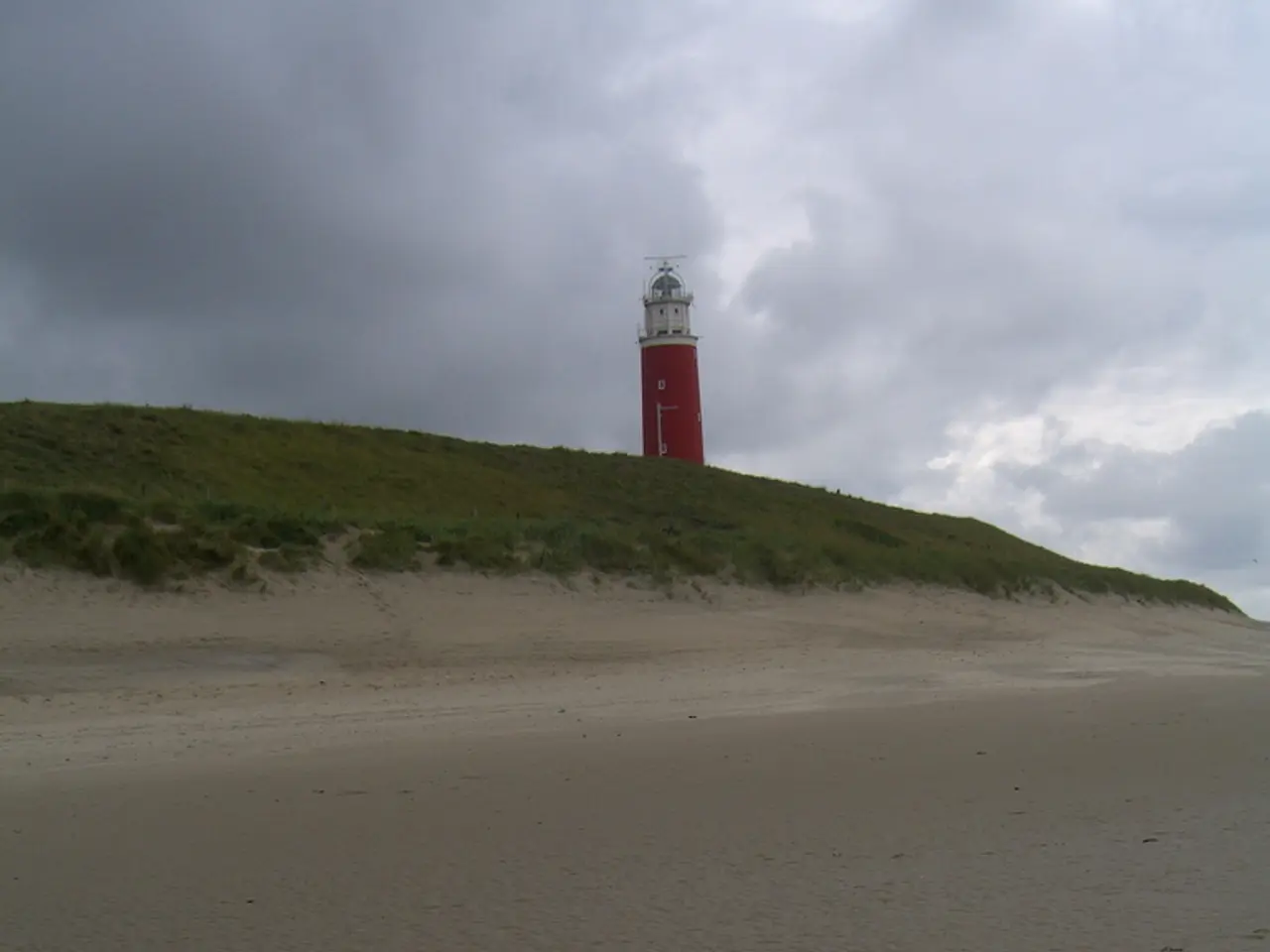Time's Sands
Global Concerns Over Sand Mining: Environmental and Social Impact
The practice of sand mining, once considered a harmless activity, is now under scrutiny for its significant environmental and social impacts. This global business, worth billions, is causing concern among environmentalists, policymakers, and communities worldwide.
Environmental Impacts
Sand mining leads to a measurable loss of biodiversity and disruption of aquatic and riparian ecosystems. For instance, dredging in rivers like the Umdloti River has resulted in habitat destruction, affecting vulnerable species such as turtles. Mining in coastal or marine environments can devastate habitats like coral reefs, seagrass beds, and mangroves, threatening numerous species.
Large-scale sand mining also alters natural landscapes, permanently changing coastal and river landscapes, and threatening UNESCO Biosphere reserves and sensitive ecosystems over thousands of years. Mining operations often cause erosion, soil degradation, and deforestation, undermining land stability and natural vegetation cover. This can worsen flood risks and reduce land fertility.
Moreover, mining disturbs sediments and can pollute water bodies with suspended solids or toxins, reducing water quality and affecting aquatic life. In Vietnam, sand mining in the Mekong River has lowered the river level by three feet, leading to salt-water intrusion, coastal erosion, and pressure on fish stocks.
Social Impacts
Indigenous and local communities may be forcibly evicted from their lands without proper consent in mining areas, violating their rights and damaging livelihoods. Child and forced labor are also common in illegal or unregulated mining. Abandoned mining pits fill with stagnant water, increasing mosquito breeding grounds which elevate malaria transmission in local populations.
Illegal sand mining often conflicts with agricultural activities by degrading farmland, destroying crops, and causing land shortages for farmers, which can raise costs and threaten food security. Illegal mining is frequently linked to organized crime, trafficking, and unsafe labor conditions, exploiting vulnerable populations including children and adults.
In recent years, sand mining has been linked to worsening flooding in regions like Kerala, India, and Houston, Texas, exacerbating flood damage during natural disasters like Hurricane Harvey.
Possible Solutions
Recycled construction debris can help reduce the demand for sand, reducing the black market. Recycled plastics could replace concrete and could be more durable than our current materials. The first all-plastic bike path opened in Zwolle, Netherlands, in September 2018.
The team behind the material Finite has developed a way to use desert sand for construction, binding it with a proprietary binding material that can also bind other waste materials. Finite is designed to be biodegradable and can be melted down and reused, unlike conventional concrete.
The Netherlands currently recycles about 90 percent of its construction debris, a goal worthy of emulation. Improved regulation, monitoring, and sustainable practices are needed to mitigate harm globally.
References:
- Sand Wars (2013), a documentary by Denis Delestrac.
- Sand: The Global Epic of Sand, by Vince Beiser (2019).
- The Guardian, "Sand Wars: the global fight to stop a resource crisis," 2018.
- South Asia Network on Dams, Rivers and People (SANDRP), "Sand mining in India," 2018.
- National Geographic, "The global sand crisis," 2018.
- The environmental consequences of unchecked sand mining stretch beyond local ecosystems, impacting global biodiversity and climate change.
- The disruption of aquatic and riparian ecosystems, such as rivers and coral reefs, can jeopardize species survival, including vulnerable turtles and plants.
- In addition to disruptions in ecosystems, large-scale sand mining alters natural landscapes, threatening UNESCO Biosphere reserves and sensitive ecosystems over extended periods.
- Environmental science researchers warn that mining operations often lead to erosion, soil degradation, and deforestation, which can undermine land stability and vegetation.
- Worsening flood risks and reduced land fertility are further concerns, as sand mining contributes to an increased susceptibility to natural disasters.
- Sand mining also poses social challenges, as it may lead to forced evictions and the displacement of indigenous communities, damaging livelihoods and human rights.
- Child labor and unsafe labor conditions are commonly observed in illegal mining areas, placing vulnerable populations at risk.
- The degradation of farmland caused by illegal mining can raise costs and threaten food security, particularly in regions already grappling with food shortages.
- The connection between sand mining and organized crime is becoming increasingly apparent, as the practice fuels illegal activities, such as trafficking and unsafe labor conditions.
- To counteract the negative impacts of sand mining, policymakers and environmental advocates are exploring alternative materials for construction, such as recycled plastics and bound desert sand.
- Investing in sustainable practices and improved regulation is essential to protect the environment and promote economic growth in a responsible, equitable manner, ensuring the overall well-being of communities around the world.





